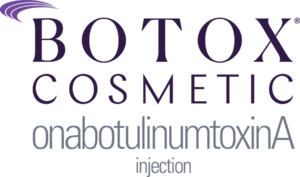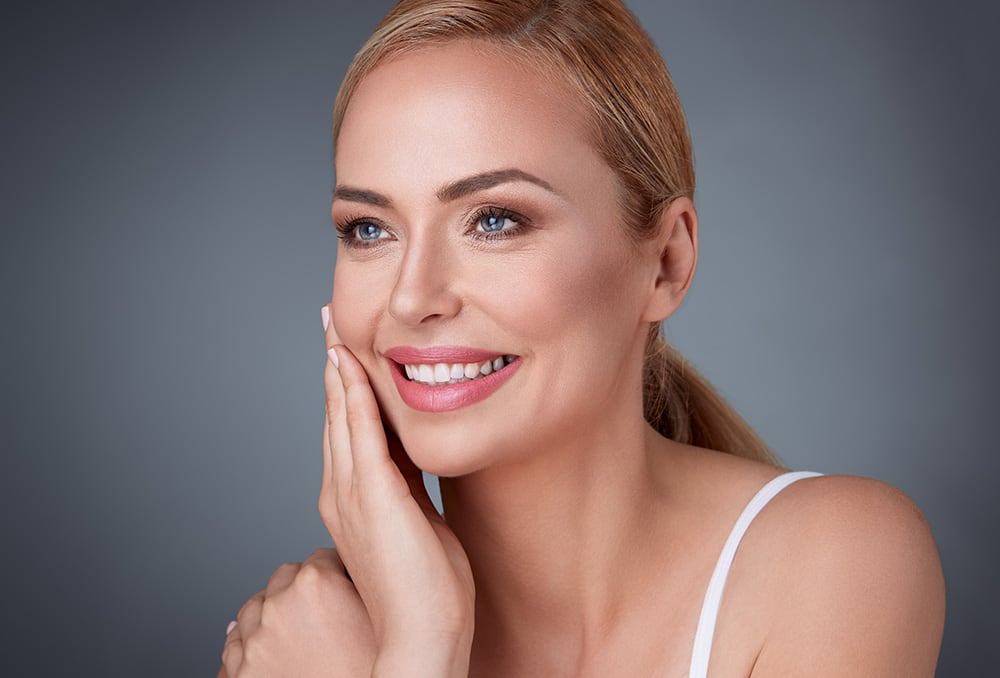 Two types of wrinkles develop as we age. The first are static wrinkles, which are caused by folds that form from the sagging of facial tissues. These wrinkles are caused by the life-long effects of gravity and result in “laugh-lines” and “marionette lines.” These wrinkles are best treated with dermal fillers such as Restylane, Hylaform, and Captique. If significant sagging of facial tissues is present resulting in jowling, loss of the jaw line, and laxity of the neck, then a facial rejuvenation procedure may be considered.
Two types of wrinkles develop as we age. The first are static wrinkles, which are caused by folds that form from the sagging of facial tissues. These wrinkles are caused by the life-long effects of gravity and result in “laugh-lines” and “marionette lines.” These wrinkles are best treated with dermal fillers such as Restylane, Hylaform, and Captique. If significant sagging of facial tissues is present resulting in jowling, loss of the jaw line, and laxity of the neck, then a facial rejuvenation procedure may be considered.
Dynamic wrinkles are caused by contractions of the small delicate muscles of facial expression each time we smile, laugh or frown. Over a lifetime normal use, these muscle contractions may lead to more permanent lines and creases. Dynamic wrinkles typically form across the forehead, between the eyebrows (frown lines), and on the sides of the eyes (“crow’s feet”).
BOTOX® has been approved for the treatment of dynamic wrinkles. The procedure, which uses a purified chemical produced by the bacterium Clostridium botulinum, is termed cosmetic denervation. BOTOX® blocks the action of the muscle of expression by temporarily paralyzing them. Although the chemical is the same as the one that causes a form of food poisoning (Botulism), the amount used in cosmetic surgery thousands of times less concentrated and will cause no body-wide effects.
Since 1982 BOTOX® has been used safely and successfully to treat conditions essential blepharospasm (eye twitching) and strabismus (lazy eye). Over the past few years it has become a well known treatment for dynamic wrinkles of the face. BOTOX® has also been used to treat excess sweating (hyperhydrosis) of the underarms, palms and even soles.

How Does BOTOX® Cosmetic Work?
When injected into a given area BOTOX®, which is the trade name of Botulinum toxin type A, blocks the impulses from the nerves to small muscles of facial expression. The muscles therefore cannot contract and tend to relax. When muscles relax, the overlying skin remains smooth and unwrinkled while the untreated facial muscles continue to contract in a normal fashion, allowing normal facial expression to be unaffected.
What Areas Can Be Treated?
BOTOX® is most commonly performed in the upper face. The most common areas requested are the forehead lines, vertical “frown lines” between the eyebrows, and “crow’s feet” from the sides of the eyes. When used to treat crow’s feet and vertical frown lines, BOTOX® can also provide a small brow lift by paralyzing the muscles that depress the brow. Most patients experience a 2 to 3 millimeter brow lift causing the eyes to appear brighter and more refreshed.
How Long Do BOTOX® Injections Last?
The full effects of BOTOX® treatment are not apparent for 3 to 7 days. The effects are temporary in that the body slowly metabolizes the toxin in approximately three to six months. The muscles will slowly regain activity.
Are There Any Side Effects?
There are very few side effects to this procedure. While allergy to any medicine is possible, it is extremely rare with BOTOX®. While a very small amount of brow drooping can occur when injected in this area, this can usually be avoided by not treating the 1-cm area just above the eyebrows. Despite precautions however in exceptionally rare circumstances this can still occur. However due to the non-permanent nature of BOTOX® this is always temporary. In these unlikely circumstances if a droop were to occur, it usually lasts about 2-3 weeks (much less than the full dose of BOTOX® lasts).

Am I A Suitable Candidate For BOTOX® Cosmetic?
During your initial consultation, Dr. Zemmel will determine if you are a suitable candidate for BOTOX®. Also please discuss you goals for facial rejuvenation with him. Remember BOTOX® cannot improve all type of wrinkles. In addition to BOTOX®, there are many types of treatments available, both surgical and non-surgical, that can provide you with the new look you desire.
BOTOX® is a registered trademark of Allergan, Inc.